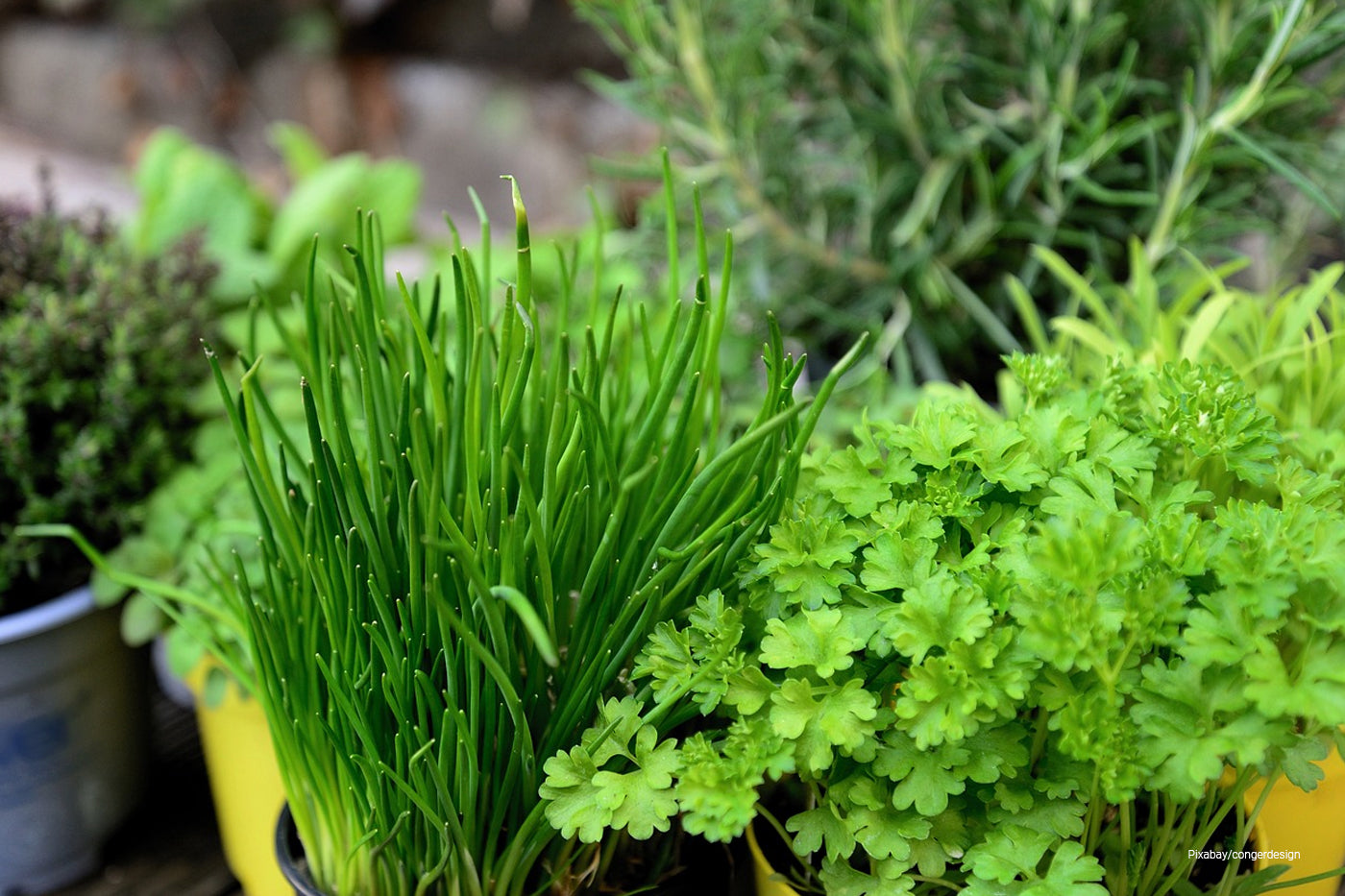Herbs are revered for both their culinary and their medicinal value. Herbs can add flavor to your dinner and also help you sleep or even get over your cold more quickly.
Fortunately, growing herbs to use in your kitchen or for your ailments is relatively easy. Herbs will grow in almost any type of soil, do not need any type of fertilizer, and are typically not bothered by disease or insects.
Contents []
Herbs can be grown either inside or outside, depending on your particular needs. There are advantages and disadvantages to both indoor and outdoor growth.

|
Growing Herbs Indoors |
Growing Herbs Outdoors |
|
✔ Easy access |
✔ More flavor |
|
✔ No Weeding |
✔ Higher yields |
|
✔ Grow year round |
✔ More space |
Whether you choose to grow your herbs inside or out, there are some things that all herbs need. This includes moderate temperatures, plenty of light, and a soil that will drain well.
Most herbs come from the Mediterranean, so try to provide the plants with conditions that are similar to this and they will do well. One option is to choose a container for your herbs that can be moved in and out. This will provide you with the best of both worlds.
Creating An Indoor Herb Garden

Location
When setting up an indoor herb garden the most important thing to think about is location. Herbs will need at least 6 hours of direct sunlight per day. This can be difficult during the winter months.
To make sure that your plants are getting enough light each day consider the following when choosing the location:
Choose a window that faces the south west. If you have a corner window with one window facing west and the other south, this is ideal. Use HID grow lights as a supplement if you do not have enough natural light in your home.
Growing Medium
When it comes to potted herbs, growing medium is often a better choice than garden soil. Choose organic growing mediums that are loose and will drain well. A soil mix that uses equal parts compost, builder’s sand, and sterile topsoil can be used as well. Adding an organic fertilizer to this mix is recommended.Another option is a soilless mix that is created using four to six parts peat moss, a part perlite, and one part vermiculite. To add nutrients blend half a cup of oyster shell lime, bone meal, and canola meal for every eight gallons of mix.
Watering
It is important to make sure that you water your herb garden just enough to keep the soil moist. If the container is too soggy then the roots of the herbs will rot. The topsoil should completely dry out before you water it again.
Outdoor Herb Gardens

Location
Outdoor herb gardens depend on location as well. You can grow your herbs in raised beds and planters. When growing outdoors determine the number of plants that you want to grow and look at how much each herb needs. Choose a location that provides plenty of sunshine.
Soil
Soil varies in different areas. Herbs will need an area that has a loam soil or soil that has been improved with compost, manure, or peat moss. It is a good idea to use a soil test kit in order to test different areas of your garden. For most herbs you will want the pH to be between 6.0 to 7.0.
Prepare the beds by digging about a foot into the soil and then turning it over. Large stones should be removed. Mix in organic matter and use a rake to level the ground.
Watering
Watering is the same for an outdoor herb garden as an indoor. Make sure to keep the soil wet, but not soggy.
Planting And Propagation
Most herbs can be started with seeds. However, there are a few such as oregano, rosemary, and mint that will do better if transplanted. Seeds should be started inside. To start your herb seeds you will want to use peat pots, grow bags, seed trays or any small container such as an egg carton or yogurt container. Fill the container with soil and water. Place the seeds on top and then cover with a small amount of soil. Place pots in a south facing window. Your seeds should start to develop in about five to ten weeks.
Transplanting
Once you are ready to move your seeds outside, make sure there is no risk of frost. Water the plants about an hour or so before starting the transplant. Loosen the herbs from the side of the pots and then gently place them in the prepared hole in the ground or pot. Fill the hole in and tamp it down.
You can also plant seeds directly into the ground. Just make sure that there is no danger of frost before you plant and then follow the directions on the packet.
Maintenance

Once you have an established herb garden you will need to maintain it in order to keep it flourishing. Most herbs are fairly hardy and many even produce chemicals and oils that will repel pests naturally. There are some herbs such as rosemary and sage that will grow in harsh conditions.
Your herbs may be attacked by insects, mildew, mold, or other types of undesirables. There are some organic remedies that can be used in order to prevent this from happening.
Conclusion
Overall, growing an herb garden can be a fun way to have fresh herbs at your fingertips at all time. Most herbs are fairly easy to grow and will withstand some fairly harsh conditions.
The most important thing to remember when planting your herb garden is that herbs do need at least six hours of sunlight per day. If you do not have a window in your home that can provide the plants with this amount of sunlight, buying a grow light is recommended.



